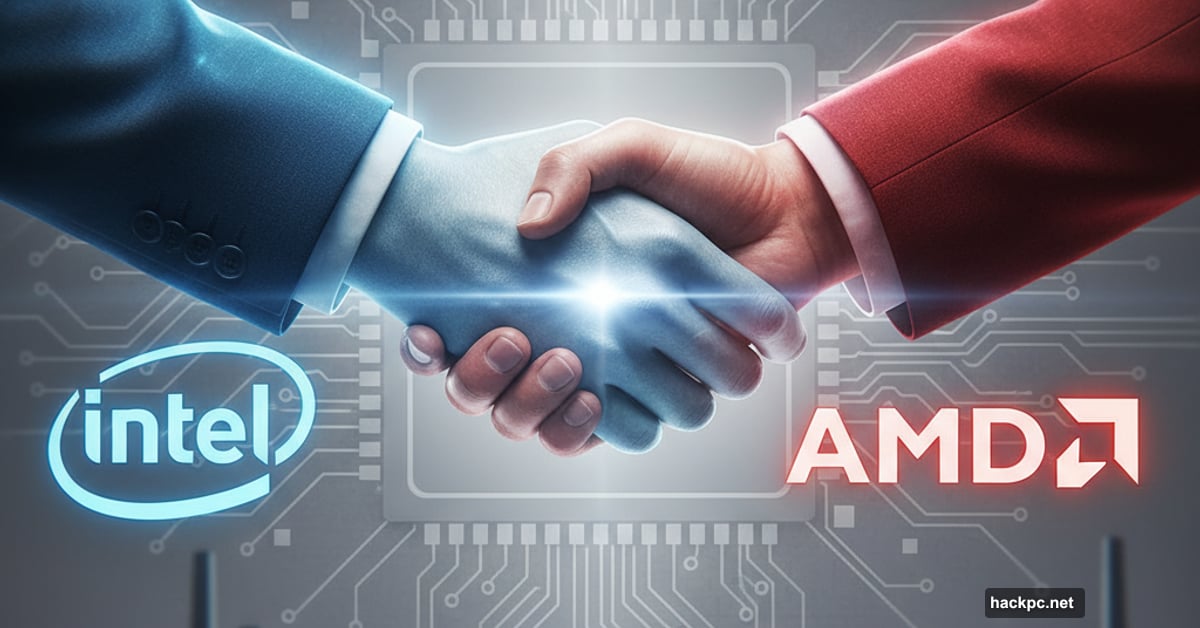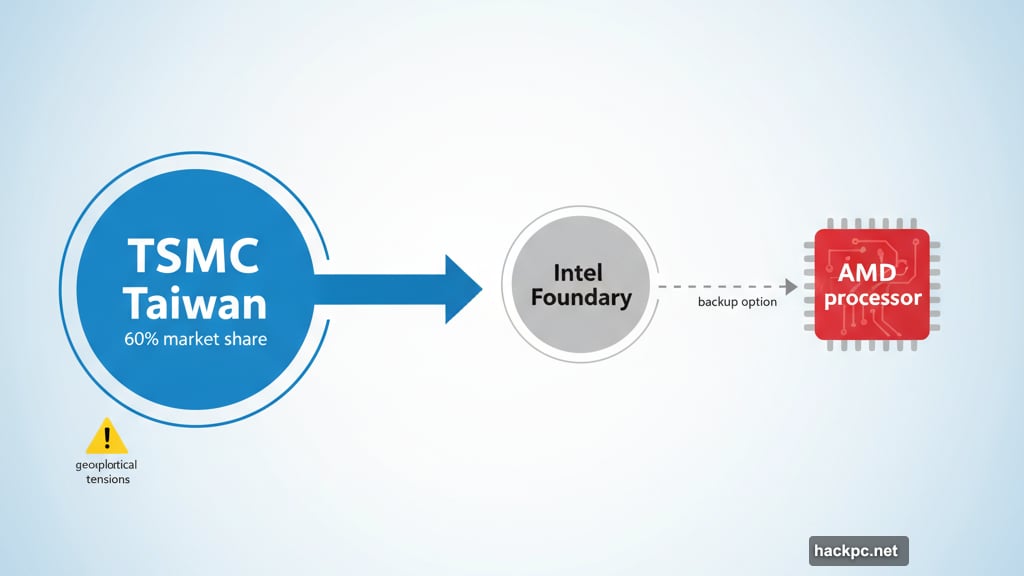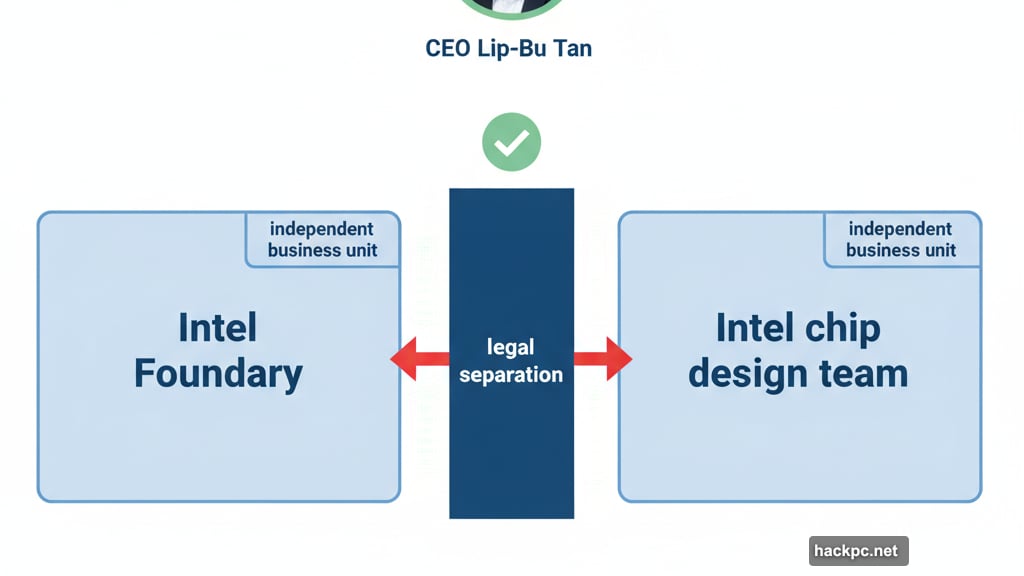
Intel just scored the kind of win that seemed impossible six months ago. The chipmaker is talking with AMD about manufacturing its rival’s processors.
Yes, you read that right. AMD might let its biggest competitor build its chips. That’s like Coca-Cola asking Pepsi to bottle its drinks. Yet here we are, and investors love it. Intel stock jumped 7% on the news.
This isn’t just business gossip. It signals something fundamental shifted in the chip industry. Let’s break down why this matters and what it means for the future of semiconductor manufacturing.
The Deal That Shouldn’t Make Sense
AMD currently manufactures everything with TSMC in Taiwan. That partnership works brilliantly. So why would AMD even consider Intel?
Two words: supply diversification. TSMC dominates chip manufacturing with roughly 60% market share. But geopolitical tensions around Taiwan make companies nervous. Plus, TSMC’s factories run at near-full capacity. Any production hiccup ripples through the entire tech industry.
Intel Foundry offers AMD an insurance policy. Not a replacement, but a backup option when TSMC can’t meet demand or faces disruptions. That alone justifies exploratory talks.
Moreover, Intel desperately needs this validation. The company split its foundry business into a separate unit specifically to attract outside customers. But convincing chip designers to trust your manufacturing requires proof. Landing AMD would provide that proof in spectacular fashion.
Why AMD Would Trust Its Rival
Here’s the wild part. AMD competes directly with Intel in PC and server processors. They battle for every percentage point of market share in x86-based chips.
Yet AMD seems confident Intel won’t sabotage its production. Why? Because Intel Foundry operates as an independent business unit now. It has separate leadership, different financial incentives, and legal walls between foundry operations and Intel’s chip design teams.
Still, trusting your competitor requires serious confidence in those walls. AMD clearly believes Intel’s restructuring created genuine separation. Otherwise, these talks wouldn’t happen.
Remember, Intel’s new CEO Lip-Bu Tan spent decades in the semiconductor industry before joining. He understands the foundry business intimately. His credibility probably matters more than any corporate structure chart.
Intel Foundry Needs This Win
Intel’s foundry business faces an uphill battle. Building competitive manufacturing technology costs billions annually. You need major customers to justify that investment.
So far, Intel secured some promising commitments. The U.S. government pledged funding through the CHIPS Act. Nvidia took a small stake in the company. Softbank invested too.
But here’s the catch. Nvidia didn’t actually commit to manufacturing chips with Intel. Neither did most other investors. They’re betting on Intel’s potential, not yet using its services.
AMD would be different. If AMD manufactures production chips at Intel, it validates the entire foundry strategy. Other chip companies would take notice. After all, if Intel’s biggest rival trusts them, maybe everyone else can too.

Industry analysts estimate Intel needs at least three major customers to make its foundry business viable long-term. AMD could be the first domino that triggers others to follow.
The Geopolitics Behind the Deal
Let’s talk about the elephant in the clean room. U.S. policymakers want domestic chip manufacturing capacity. They’re practically begging companies to diversify away from Taiwan-centric supply chains.
Intel Foundry represents America’s best shot at competing with TSMC and Samsung. But it only works if U.S. chip companies actually use it. AMD manufacturing with Intel would perfectly align with government priorities.
In fact, you could argue AMD faces subtle pressure to diversify manufacturing anyway. Relying entirely on Taiwan creates risks that keep Pentagon officials awake at night. Intel Foundry offers an obvious solution that also happens to benefit a fellow American company.
So expect the government to cheer loudly if this deal happens. They might even offer incentives to make it more attractive for both sides.
What Could Actually Get Manufactured
Here’s where details matter. AMD won’t suddenly move all production to Intel. That would be crazy risky for both companies.
Instead, expect AMD to start small. Maybe one product line or specific chip variants. Something significant enough to test Intel’s capabilities but limited enough to contain risks.
Server chips make the most sense. AMD’s EPYC processors compete directly with Intel’s Xeon line, but AMD could manufacture lower-volume or specialized variants at Intel without threatening its core TSMC relationship.
Alternatively, AMD might use Intel for older-generation chips or specific components. That would give Intel consistent revenue without requiring cutting-edge manufacturing technology immediately.
The key word here is “talks.” These discussions are early. No contracts exist. No production timelines got announced. Both companies can walk away if terms don’t work.
The Broader Industry Implications
If Intel lands AMD, it changes chip industry dynamics in fascinating ways.
First, it proves the foundry separation model works. Other integrated device manufacturers might follow Intel’s path. Samsung already offers foundry services while making its own chips. Intel succeeding would encourage others to try.
Second, it accelerates manufacturing diversification. Right now, almost every major chip company relies on TSMC for advanced nodes. That concentration creates fragility. Intel becoming a viable alternative strengthens the entire supply chain.
Third, it potentially reshapes competitive dynamics in x86 chips. If Intel manufactures AMD’s processors, both companies gain detailed insights into each other’s designs. That could accelerate innovation as they learn from competing architectures.
Or it could get messy if those information walls break down. Corporate espionage concerns exist no matter how solid the legal separation seems.
Intel Stock Loves the News

Markets responded enthusiastically to the AMD talks. Intel stock jumped 7% immediately. That’s unusual for rumored negotiations without confirmed deals.
But investors understand the symbolism. AMD even considering Intel Foundry validates Lip-Bu Tan’s turnaround strategy. It suggests Intel’s manufacturing technology is advancing faster than skeptics believed.
Plus, Intel stock is already up 77% this year. Investors are betting on the company’s transformation succeeding. Every positive signal compounds that momentum.
However, remember that stock prices reflect expectations, not reality. If these AMD talks collapse or result in minimal business, those gains could evaporate quickly. The market is pricing in success that hasn’t happened yet.
Nobody’s Confirming Anything
Both companies refused to comment on the news. Intel declined. AMD said they “do not comment on rumor or speculation.”
That’s standard corporate practice. But it also means we’re working with incomplete information. Semafor’s Rohan Goswami reported the talks based on sources. No official announcements exist.
So treat this as a strong signal, not confirmed fact. These discussions might lead nowhere. Or they might result in a partnership announced six months from now. We simply don’t know yet.
What we do know is that someone inside these companies wanted this information public. Leaking negotiations to media serves a purpose. It could be signaling to investors, pressuring terms during negotiations, or testing public reaction.
Either way, the leak itself carries information value beyond the talks themselves.
The Stakes Couldn’t Be Higher
Intel’s entire future depends on making its foundry business work. The company is investing $100 billion building new fabs. That’s not a rounding error. It’s a bet-the-company strategic pivot.
If Intel Foundry attracts major customers like AMD, that investment pays off. Intel becomes a legitimate TSMC competitor. American chip manufacturing gets stronger. Everyone wins.
But if customers stay away, Intel owns expensive factories without enough business to fill them. That’s a nightmare scenario that could cripple the company for years.
So yes, these AMD talks matter enormously. They’re not just about one customer or one deal. They’re about validating Intel’s entire strategic direction.
Your move, chipmakers. Intel just put chips on the table. Let’s see who antes up.



Comments (0)